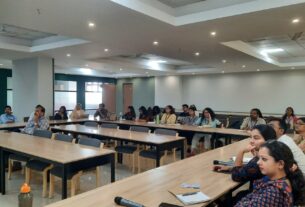With only three categories of waste, the city’s residents continue to dispose of electronic waste along with regular dry waste, which ultimately finds its way to the streets.
Yashasvini Razdan
Even as the Karnataka State Pollution Control Board (KSPCB) has laid out strict guidelines for the disposal of e-waste, heaps of cables and other electronic waste can be seen littered on the roads, highlighting how inefficient the e-waste management in the city is.
Sampada, a teacher, separates the household waste into three categories as mandated by the building’s rules. She said, “I separate the sanitary waste, dry waste and wet waste as every resident has been told to. Usually, electronic waste is generated once in a month like used batteries or tube lights. I put it along with the dry waste.”
As per a research paper titled “E-Waste Management: A Case Study of Bangalore, India”, Bangalore generates around 12,000 tons of E-waste (from computers and peripherals) every year. This estimate is based on information received from recyclers in Bangalore and from the fact that 30% of all equipment in the IT industry becomes obsolete every year and ends up as e-waste.
The Central Pollution Control Board has mandated rules which impose the responsibility of e-waste collection on the producer of the product. Special e-waste collection centres are supposed to be set up which deal with different categories of e-waste.
Solid Waste Management (SWM) expert, Ms. Manjula N. Rao at the Bruhat Bengaluru Mahanagara Palike (BBMP) Head Office explained that the disposal of e-waste was supposed to be governed by the “E-Waste Management Rules 2016”. She said, “There are vendors who are supposed to collect the e-waste and there are various collection points across the city. We don’t have a category called e-waste in our waste collection system. There are only three categories – dry, wet and sanitary. The e-waste is generally disposed off along with the dry waste. The dry waste collection centres are then supposed to segregate it and send it off for recycling.”
Gubi, the supervisor at the Jivan Bhima Nagar dry waste collection centre, said that all the items which were made of plastic were segregated and sent off for recycling. “Keyboards, wires, phone cover, and earphones are all plastic which is sent for recycling whereas broken tube lights and bulbs are put together with the glass items.”
Ms. Manjula said that e-waste should come under the category of household hazardous waste. “Electronic waste disposal is not as streamlined as the other categories of waste since there is no specified category.
Environmentalist, Mr. Sandeep Anirudhan explained that even though Bangalore has the best SWM policy, e-waste collection is still a hassle as the implementation isn’t proper. He said, “BBMP does not have proper dustbins to dispose of electronic waste. Rather than trying to manage the waste generated by 1.2 crore people, BBMP should incentivize the unorganised sector as they will ensure door-to-door collection of e-waste. This model will be self sustaining as the people will willingly sell their electronic waste items and the unorganized sector will also earn their living.”









